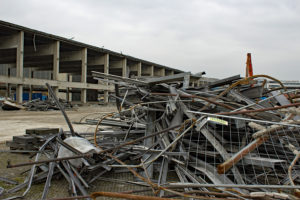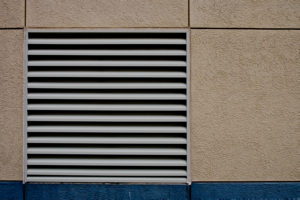Room finishes should be specified with regard to the level of cleanliness required in a space and the resources available for maintenance of finished surfaces. Standards for cleanliness are often lax, especially when it comes to ceilings.
+ Read More
|
The doctrine of privity in the common law of contract protects architects and engineers from lawsuits by contractors by requiring that for one party to sue another, there must be a contract between them.
+ Read More
|
Construction—especially demolition operations—can generate an enormous amount of waste. However, up to 80 percent of this waste may be diverted from landfills with a thorough construction waste management plan. As a result, this step is now a requirement of many municipalities and sustainable design standards.
+ Read More
|
Various regulations and guidelines for constructing and maintaining ceilings in facilities with hygienic requirements. A complement to one of the magazine's feature articles, this short web piece looks at requirements and best practices for schools, laboratories, food preparation, healthcare, and other specialized spaces.
+ Read More
|
As monolithic wall units with continuous insulation and fewer gaps to seal than stick-built framing, structural insulated panels (SIPs) are airtight and effective at stopping airborne ambient noise. However, the panels themselves are less effective at blocking low-frequency sounds.
+ Read More
|
Operable wall louvers offer maximum flexibility for airflow control, design, and functionality. To control airflow, these ‘adjustable’ wall louvers contain blades that typically rotate within the louver frame between fully open at a preset angle and fully closed.
+ Read More
|
Specification writers must now consider more performance criteria than ever before. As the list of new products continues to grow, design professionals must determine how to reach more stringent targets for indoor environmental quality and energy consumption.
+ Read More
|
Moisture presence in concrete slabs can cause problems for all types of floors, including carpeting, wood, stone, poured polymeric, and resilient finish. Too much moisture can cause floorcoverings to cup, buckle, blister, and discolor, and these problems can occur days, months, or years after installation.
+ Read More
|
Selecting floor coverings for education facilities can be a difficult decision, due to the various demands placed on them and the multiple options available.
+ Read More
|
A concrete pavement’s longevity of can be affected by several factors, including the design and construction of the transverse joint. Research was recently conducted to determine what conditions will influence the performance and life cycle cost of a sealed pavement joint.
+ Read More
|
|
|














